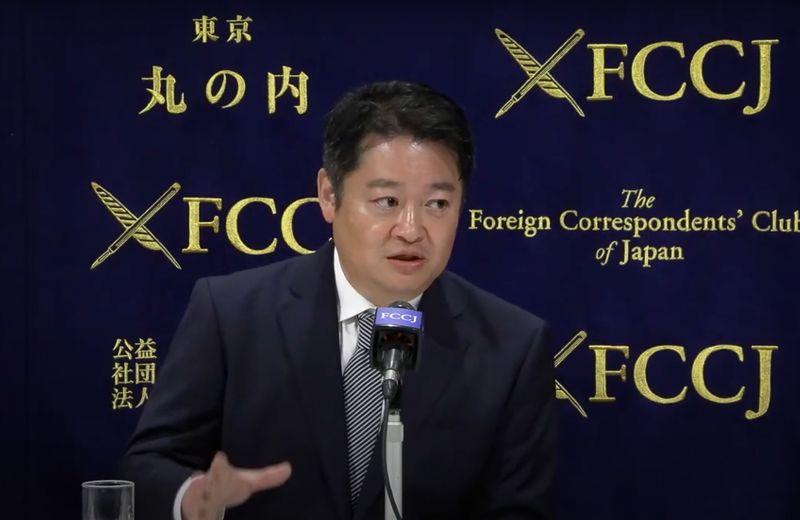Jul 3, 2024
Authorities eye taking back control of Mt. Fuji, from top to bottom

When Mt. Fuji was given World Heritage status in 2013, UNESCO left those people in charge of the mountain’s care three homework assignments - bring under control the number of visitors on the mountain, do something about unsightly manmade features spoiling the views, and reduce the burden on the environment.
Just over a decade later and local authorities have only now handed in one part of one of the assignments, in time for the summer climbing season which began on Monday.
Climbers setting out for the summit following the Yoshida Trail in Yamanashi Prefecture now have to pass through a gate installed at the 5th station restricting the flow of climbers to 4,000 a day. Each climber passing through is now also subject to a mandatory toll of 2,000 yen. Meanwhile, rangers or guides with the authority to call up people on their dangerous behavior and bad manners have been deployed along the trail.
“Despite having been given the homework to reduce the number of visitors, actually, the opposite has happened and they have increased,” Yamanashi Gov. Kotaro Nagasaki said during a press conference in Tokyo in June.
“We haven’t completed this homework. There’s a big gap between what has been done and what should have been done. This is something that has to be remedied as a matter of priority. It’s a pretty woeful situation,” he said.
Since receiving World Heritage status the number of visitors on Mt. Fuji has almost doubled, according to the governor. Over 5 million people visited the 5th station in Yamanashi Prefecture in 2019. And with visitor numbers having returned to pre-pandemic levels, and predicted to increase even more this year, there are fears that overtourism is becoming a problem even at the foot of the mountain.
It is hoped that the gate and restrictions introduced on Monday will help to control visitor numbers from the 5th station to the summit. (At the time of writing this article on Wednesday, over 1,000 climbers had passed through the gate between 3am and 8am, according to information posted on X by Mt. Fuji Climbing, a website operated by the Ministry of the Environment, Yamanashi Prefecture, and Shizuoka Prefecture.)
The lower slopes of the mountain, however, remain neglected with local authorities having done nothing over the last decade to address issues pointed out by UNESCO, according to the governor.
“We’re very worried that if we continue along this trajectory then it could well be the case that Mt. Fuji loses its World Heritage status. We have a strong sense of crisis about this,” he said.
For authorities in Yamanashi Prefecture, taking control of access to the 5th station via the Fuji Subaru Line toll road remains the key to controlling the number of visitors to the mountain.
In August last year the governor unveiled the Mt. Fuji Mountain Railway Concept which would see the Fuji Subaru Line replaced by a light railway system, eliminating the use of private vehicles and affording authorities greater control of the number of people able to access the mountain.
Nearly a year on, the governor described debate over the concept as “well under way,” but there remains opposition and misgivings from some quarters about plans to restrict the use of the toll road.
When it opened in 1964, the Fuji Subaru Line dramatically altered the way in which people climbed Mt. Fuji. Offering a radical change in ingress point to the mountain, the road effectively eliminated any necessity for people to start out on foot from the base. As a consequence, trails used by worshippers of the Fujiko religious sect to ascend the mountain from its base during the Edo Period (1603-1867) have fallen into disrepair. The culture surrounding them, including the need for the low-ranking Shinto priests who would serve as mountain guides, is also diminishing.
“We would like to press for the revival of these ancient mountain trails and promote this old method of climbing Mt. Fuji,” the governor said.
Efforts to do so are also seen by local authorities as a way to reduce the concentration of people on the mountain from the 5th station and above.
“[The mountain] is unbelievably crowded at the moment so we want to encourage people to climb at a more leisurely pace in order to appreciate the original allure of Mt. Fuji as an object of worship and an inspiration for art.”

(Screenshot of a livestreamed news conference shows Yamanashi Gov. Kotaro Nagasaki speaking during a news conference in Tokyo on June 17.)
Scenes of a crowded 5th station, queues of climbers inching their way to the summit, and slopes littered with garbage would appear to offer more inspiration to stay away from the mountain than they do for creating art - one of the reasons Mt. Fuji got the nod of recognition from UNESCO.
But so many climbers have so far appeared undeterred. And despite having fallen so far behind with their homework, local authorities say there have been no actions from UNESCO, including inspections, which might appear as a move toward revoking World Heritage status.
The perceived threat of this, though, and even a ban on climbing the mountain have been at the heart of some of the discourse, according to the governor.
“The implication for us is that unless measures are taken, either one day we would have to forbid people from climbing or we would lose World Heritage status,” he said.



0 Comments